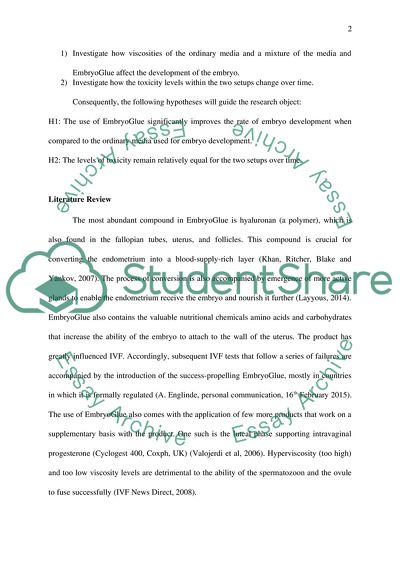Cite this document
(“Embryo Glue (research evidence of clinical effectiveness, evaluate Research Proposal”, n.d.)
Embryo Glue (research evidence of clinical effectiveness, evaluate Research Proposal. Retrieved from https://studentshare.org/health-sciences-medicine/1677244-embryo-glue-research-evidence-of-clinical-effectiveness-evaluate-clinical-service-since-introduced-at-the-hospital-whether-improved-success-rates-influence-service-provision-and-then-look-at-aspects-of-timing-in-lab-modellab-based-research
Embryo Glue (research evidence of clinical effectiveness, evaluate Research Proposal. Retrieved from https://studentshare.org/health-sciences-medicine/1677244-embryo-glue-research-evidence-of-clinical-effectiveness-evaluate-clinical-service-since-introduced-at-the-hospital-whether-improved-success-rates-influence-service-provision-and-then-look-at-aspects-of-timing-in-lab-modellab-based-research
(Embryo Glue (research Evidence of Clinical Effectiveness, Evaluate Research Proposal)
Embryo Glue (research Evidence of Clinical Effectiveness, Evaluate Research Proposal. https://studentshare.org/health-sciences-medicine/1677244-embryo-glue-research-evidence-of-clinical-effectiveness-evaluate-clinical-service-since-introduced-at-the-hospital-whether-improved-success-rates-influence-service-provision-and-then-look-at-aspects-of-timing-in-lab-modellab-based-research.
Embryo Glue (research Evidence of Clinical Effectiveness, Evaluate Research Proposal. https://studentshare.org/health-sciences-medicine/1677244-embryo-glue-research-evidence-of-clinical-effectiveness-evaluate-clinical-service-since-introduced-at-the-hospital-whether-improved-success-rates-influence-service-provision-and-then-look-at-aspects-of-timing-in-lab-modellab-based-research.
“Embryo Glue (research Evidence of Clinical Effectiveness, Evaluate Research Proposal”, n.d. https://studentshare.org/health-sciences-medicine/1677244-embryo-glue-research-evidence-of-clinical-effectiveness-evaluate-clinical-service-since-introduced-at-the-hospital-whether-improved-success-rates-influence-service-provision-and-then-look-at-aspects-of-timing-in-lab-modellab-based-research.


